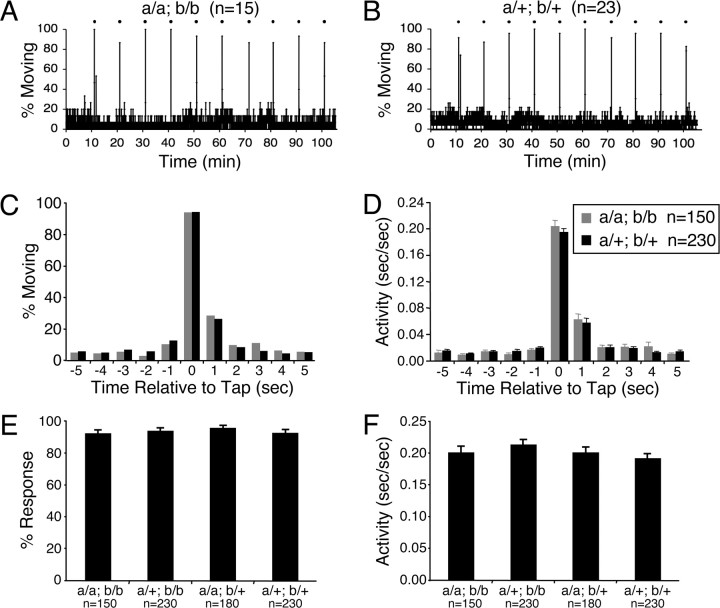Figure 5.
Zebrafish TRPA1 paralogs are not required for behavioral responses to a mechanical stimulus. A, B, Each data point represents the percentage of larvae that exhibited any locomotor activity every second. The averages of 15 trpa1a−/−; trpa1b−/− (A) and 23 trpa1a+/−; trpa1b+/− (B) larvae are shown. A mechanical stimulus was applied every 10 min (indicated by black dots). Larvae of both genotypes responded robustly to each stimulus. C, D, The percentage of larvae that exhibited any locomotor activity (C) and the average duration of locomotor activity (D) during each second for 5 s before and after the application of the mechanical stimulus. The stimulus was applied at time 0. The average responses of 15 trpa1a−/−; trpa1b−/− and 23 trpa1a+/−; trpa1b+/− larvae to 10 stimuli are shown. E, F, Each bar represents the average percentage of larvae that exhibit any locomotor activity (E) and the average duration of locomotor activity (F) during the second after application of the stimulus ± SEM. The average responses to 10 stimuli are shown for 15 trpa1a−/−; trpa1b−/−, 23 trpa1a+/−; trpa1b−/−, 18 trpa1a−/−; trpa1b+/−, and 23 trpa1a+/−; trpa1b+/− larvae. There are no statistically significant differences in the responses of larvae of different genotypes.

